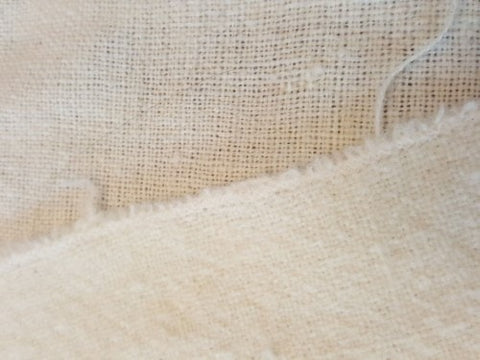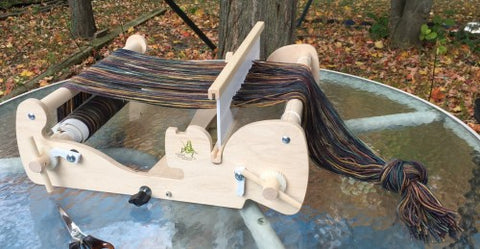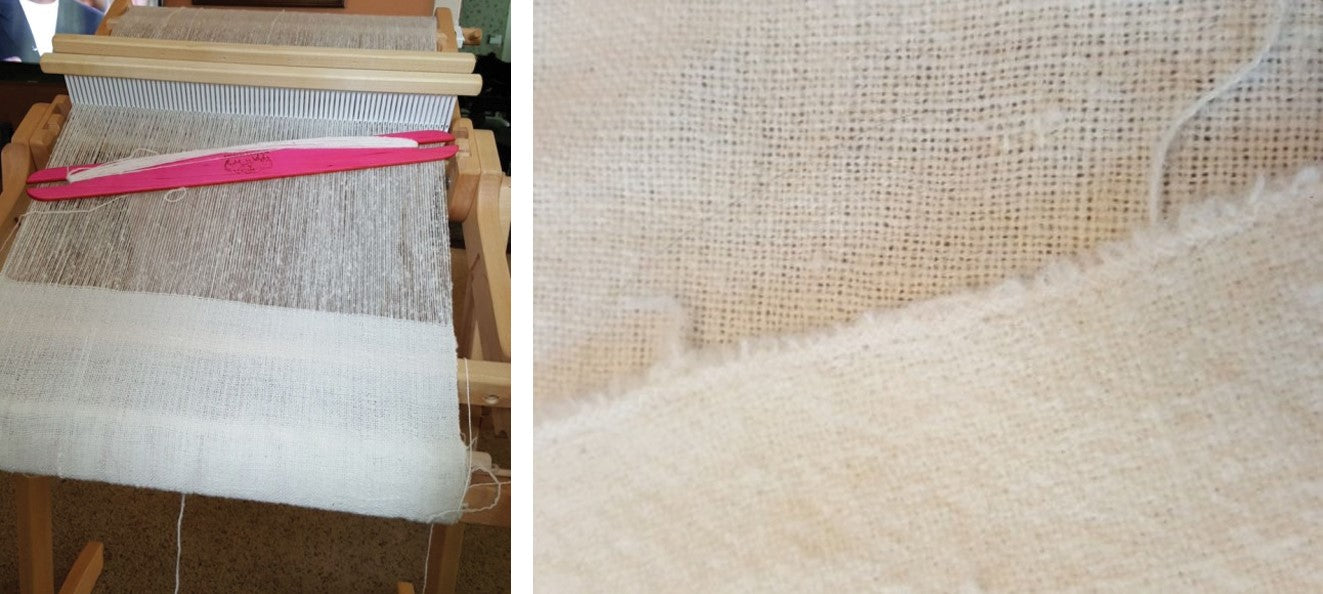
Beth Smith and Jillian Moreno live about 30 minutes from each other and spend a lot of spinning time together, trading ideas and cheering each other on. Recently, the two have found weaving sneaking into their thoughts more and more. “Wouldn’t it be fun,” they said, “to do a project where we spin our yarn and weave it and see what happens?” “Yes!” they said, “that sounds like an awesome plan.” We thought so, too. Through the end of the year, they will post on the Schacht Spindle blog, telling you about their journey weaving with handspun on a rigid heddle loom.
Beth
This week is all about sampling on the loom. I know. It sounds hard, and frankly it’s what kept me from weaving anything more serious than a scarf for years. But, I have had knitting projects that were a disaster because I didn't knit a swatch. And I tell my students how important it is to sample for the yarn they are spinning--all the way through a finished fabric--to make sure the yarn is going to work for its intended purpose. Heck, I wrote a whole book about sampling! It’s called The Spinner’s Book of Fleece. So, I decided that I would stop being a baby and learn how to sample on a loom.
It is true that when you are sampling for weaving it will take a bit more yarn than a knitted or crocheted swatch. And yes, if you are spinning for weaving, the yarn feels that much more precious. However, I’d rather spin a few extra hundred yards and know that my fabric will work, than spin a thousand yards or more that never see the light of day because the fabric failured.
So, I started with what I know. I know that generally, if you want a balanced plain weave, you take the wraps per inch (wpi) and divide by two to get the ends per inch (epi). My yarn had about 18 wpi, so according to this formula, I would sett it at 9 epi. The thing is, I want to make a skirt, and I had made a few samples a couple of years ago when I started to think about this project. I made three samples at that time. One sample was sett at 10 epi, one at 12 epi and one at 15 epi. None of the samples were right. None of them were woven tightly enough to make a skirt that was going to be stretched and twisted and sat on.

Since I knew all of that, I decided to sett this sample at 20 epi and see how things worked out. I was worried that the fabric might be too stiff, but I went ahead. I could always make more yarn and try again. So I put a yard of warp on the loom and I made a sample the full 15" on my Flip Loom. I wanted to be able to see how the fabric would drape, so a large sample was important. (Remember that all of the rules about sett are just guidelines.) It’s sort of like the gauge that is listed on a yarn ball. You can do whatever is best for your project.
Twenty epi on a rigid heddle loom requires two 10-dent heddles and some fancy warping that you can find in The Weaver’s Idea Book by Jane Patrick. It took me a little bit to figure it out but once I had threaded the first inch I was on a roll.
Since I was weaving a plain weave fabric, both heddles were moved to the same position each time I needed to change the shed. (There are some weave structures, like twill, where you move the heddles independently of each other.)

After I wove the fabric with about the same number of picks per inch as I had ends per inch, I removed the fabric from the loom and zigzagged along the cut edges so the fabric wouldn’t ravel. I finished the fabric according to the finishing instructions in Spin to Weave by Sara Lamb. First, I threw the sample in very hot water in the washing machine and let it soak for 20 minutes. Then, I turned the machine on and let it agitate for 5 minutes. I began checking the sample every minute until the fabric seemed to be sufficiently fulled. I wasn't going for felted fabric, but I did want the yarns to settle in together. After a full ten minutes of agitation, I was happy with the fabric. I spun the water out in the machine and then threw it in the dryer. I know! It’s wool! But I did it anyway because Sara said so. I left it in there for about 10 minutes. At this point it wasn't completely dry but it was fluffed up. I then pressed fabric with a press cloth. I know! I put a hot iron on wool. I didn’t move the iron back and forth, rather I would put it down in a spot then lifted it up, and the put it at the next spot. This took away any wrinkles and dried the fabric more. I laid it flat until it was completely dry.

At this point I made my decision that I was happy with the fabric and I would stick with 20 epi for the actual skirt weaving.
Since I was happy, it was time to finish spinning the rest of the yarn I would need. We'll talk about that next time.
Jillian
This week for me was all about remembering how to weave. I've spun my warp yarns for my mobius and thought about just jumping in and warping the loom with those, but I had a tickly feeling that my weaving skills were more than a bit rusty.
In the end, I decided to do a dry run with commercial yarn and boy am I glad I did.
I grabbed two skeins of DK superwash merino from Fiberstory that I've been hoarding. The darker (Milo) would be used for the warp and the reddish (October), I would use for weft. I'll do a scarf, I thought, it'll be quick, I thought. Snort.

First came the warping of the Cricket. I was too lazy to wind my yarn into a cake so I warped off of a skein winder. It was a lovely fall day and I worked on my back deck. It was breezy, lovely to stand around in, but not so great when the breeze constantly wraps your yarn around the swift, stopping it dead. There was grumbling and words not fit for this blog.
I finished warping the loom and wound my yarn around the, back beam, wait, no, I wound it onto the front beam! I warped my loom backwards! Holy cats, I looked at all of the pictures, I even had extra tea, my brain should have been working better! More words were muttered, but I wound my warp through to the back beam and re-tied the loom the right way.

If I had been using my handspun for this I would have been sweating buckets. This is my first ever handspun-for-warp project, so I'm feeling a little precious about my warp-to-be yarn.

I finished threading the loom with no problems and then started weaving. I decided to use the leftover Milo color for thin stripes in the weft between the thicker stripes of October, just to see how the colors played out with a matching and a contrasting variegated yarn. I wove some in the afternoon and some at night while I watched TV. (Quantico, if you must know. Don't judge.) It went well, at least until I looked at it in the morning.
My loom looked like the groundhog that lives under my deck snuck in and did my weaving. My edges were ragged, both too loose and too tight. I had threads I didn't catch, so there are floats on top. The saddest part was I was looking right at my weaving while I worked because I was focused on the spacing of the weft threads.

I went to my books and read about selvedges. When I wove before I always angled my warp threads in a big diagonal, but now I tried putting them in as more of an arc.
I watched both my weft spacing and my selvedges, looking at the bigger weaving picture. I also had that sad talk with myself, “Woman, you are 52 years old, you cannot weave a dark warp with dark weft in a dark room. You need extra light”. Sad, but true.

It all smoothed out with light and patience and few tricks from the weaving books. I’m running away this weekend for cabin and movie time with a bunch of other crafty women. I’ll be finishing this scarf up and putting on my precious handspun warp. We'll see what mischief happens this time. Maybe the groundhog is a better weaver?

